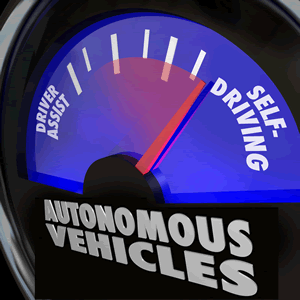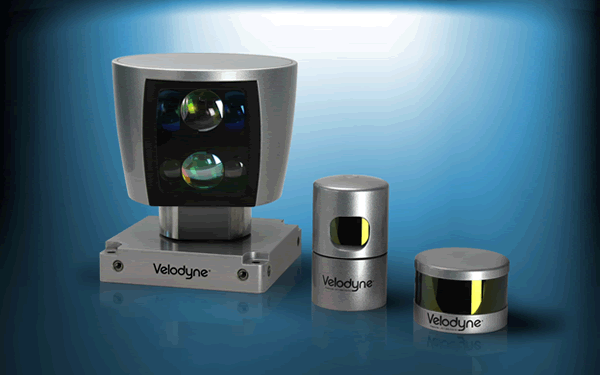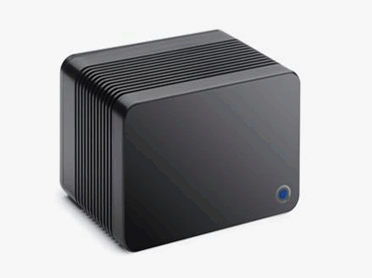Driverless Cars Shrink LiDAR Technology
As autonomous vehicles and advanced driver assistance systems become mainstream, LiDAR sensors become smaller, cheaper, and consumer-friendly. Will this impact automotive connector design?
 Light Detection and Ranging, or LiDAR, is a core source of data for driverless car systems like that being developed by Google, and the huge, expensive, mechanical LiDAR units used on these projects are iconic of the experimental driverless cars of today. Mechanical LiDAR systems like those atop the Google cars use pulses of laser light on a unit constantly changing direction to build a complete 3D image of the environment, like light-based radar. The size of the mechanical LiDAR units and reliance on moving parts makes them expensive and not reliable enough for most consumer applications – the LiDAR unit used on the early Google autonomous vehicles, Velodyne’s HDL-64E, costs about $80,000. The technology is now becoming smaller and cheaper, however – a necessary step in bringing technologies like driverless cars from experimental to mainstream commercial availability.
Light Detection and Ranging, or LiDAR, is a core source of data for driverless car systems like that being developed by Google, and the huge, expensive, mechanical LiDAR units used on these projects are iconic of the experimental driverless cars of today. Mechanical LiDAR systems like those atop the Google cars use pulses of laser light on a unit constantly changing direction to build a complete 3D image of the environment, like light-based radar. The size of the mechanical LiDAR units and reliance on moving parts makes them expensive and not reliable enough for most consumer applications – the LiDAR unit used on the early Google autonomous vehicles, Velodyne’s HDL-64E, costs about $80,000. The technology is now becoming smaller and cheaper, however – a necessary step in bringing technologies like driverless cars from experimental to mainstream commercial availability.

The Velodyne line of LiDAR sensors, from the large HDL-64E used on Google autonomous vehicles to the hockey-puck-sized solid-state unit.
Delphi Automotive and Silicon Valley startup Quanergy have teamed up to overcome the problems of mechanical LiDAR with solid-state technology. “You can buy a radar sensor for less than $100 because the technology moved from expensive mechanical systems to solid-state solutions with no moving parts,” says Jeff Owens, chief technology officer at Delphi. “That greatly improves reliability and decreases the cost. This scenario is holding true for LiDAR as well.” Delphi and Quanergy envision that this solid-state advancement in LiDAR technology will bring the cost down from tens of thousands of dollars per sensor to an estimated $250.

Quanergy’s S3 solid-state LiDAR, developed with Delphi
This solid-state technology is still developing however, and a journalist from IEEE Spectrum who tested Quanergy’s totally solid-state S3 at CES in January reported that it’s not matching Quanergy’s performance benchmarks quite yet, although it certainly works. Owens says Delphi and Quanergy will do prototype testing over the next 18 months. “One area of focus will be automotive-grade, that is, can we make parts that will last the life of the car in all kinds of weather and on all kinds of roads?” Elimination of moving parts with solid-state technology will go a long way toward allowing LiDAR sensors to be included in consumer products like vehicles with minimal maintenance costs.
Alongside Quanergy and Delphi, Velodyne is keeping up with announcements of new solid-state LiDAR systems, like the Ultra Puck Auto, that are poised to go into mass production and are rapidly falling in price. On January 5th, Velodyne announced that Ford placed a purchase order for these new solid-state units for use in Advanced Driver Assistance Systems (ADAS) and autonomous driving. Velodyne estimates the cost of its Puck sensors at around $500 per unit once they are in mass production.
While LiDAR is used in a wide range of applications including meteorology, geology, and agriculture, it is clear that the main driving force for smaller, cheaper, solid-state LiDAR is autonomous vehicles. Special applications like LiDAR use on unmanned aerial vehicles (UAVs) are also spurring innovation in solid-state LiDAR, however. Weight remains a significant concern for UAV applications, and companies are working to develop lighter versions of their automotive sensors for use on UAVs, such as Velodyne’s Puck LITE.
The experimental era of driverless cars has been marked by large and cumbersome LiDAR sensors, and while bulky connectors and cables are tolerated in R&D stages, the growing use of LiDAR in ADAS and autonomous driving systems available to consumers will make the need for automotive-grade and automotive-standard connectors stronger.
According to Mark Lynn, director of advanced perception systems at Delphi, this shift to automotive-grade connectors will not pose a major challenge to adoption. “The inputs/outputs for a solid-state LiDAR are not large in number – Ethernet connection for communication of the point cloud and detection and classification information, power/ground, CAN (controller area network) for diagnostics and vehicle bus inputs, and heater and washer control I/O – so the connector pin count will not need to be particularly large… The transition to automotive connection systems will simply be a requirement for implementation in an automotive environment. Connection systems are not a critical path-development gap at this time because the technology required for those is already available.”
[hr]
Neil Shurtz is a contributor to Connector+Cable Assembly Supplier based in San Francisco. As a freelancer and in his work in public relations for high-tech companies, he has written about technology in the oil and gas, aerospace, and manufacturing industries. Shurtz specializes in framing complex and niche technical topics in a broader social context.




